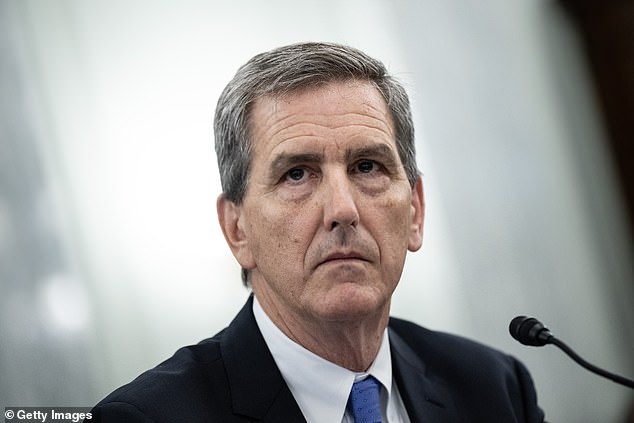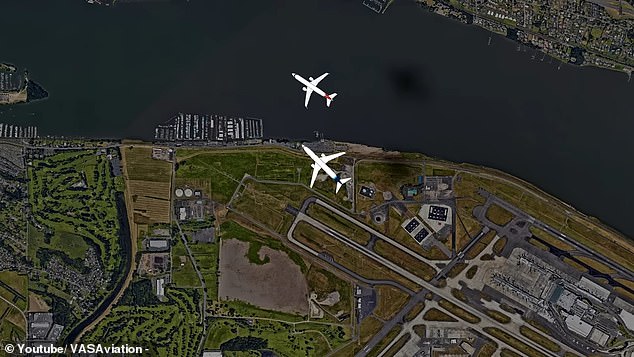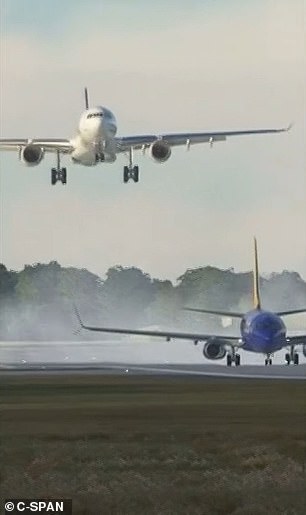Airport near-misses surge as America’s overstretched air traffic controllers say they are pushed to the brink in dire staffing shortage
Aircraft near misses are on the rise in the US amid a severe air traffic controller staffing shortage that air traffic controllers say is pushing them to the brink physically and mentally.
In the fiscal year through September 30, the number of “significant” air traffic control errors rose 65 percent from the previous year, to 503 incidents, according to internal Federal Aviation Administration data reported by the New York Times on Saturday.
Citing data and interviews with current and former inspectors, the Times revealed incidents of inspectors sleeping and drinking on the job, fights breaking out in control towers and complaints of poor working conditions, including black mold and biting insects.
Controllers say staff shortages often force them to work 10-hour shifts six days a week, on irregular schedules, leaving them exhausted and mentally depressed and turning to alcohol to cope.
In a statement, the FAA said the lengthy Times report “does not reflect the high level of safety of our nation's airspace.”
'Flying has never been safer, thanks in large part to our air traffic controllers. We encourage them to report safety concerns and incidents without fear of reprisal,” the agency added.

In October, Michael G. Whitaker became FAA administrator. One of his most urgent tasks is to address the increase in close calls between planes at major airports
Between 2011 and 2022, the number of fully certified air traffic controllers fell by more than 9 percent, even as traffic increased during that time.
According to target staffing levels set by the FAA and the union representing air traffic controllers, 99 percent of the nation's air traffic control locations are understaffed.
Under the looser guidelines favored by the FAA, only 63 percent of facilities are considered understaffed.
To make up for the shortage, auditors at 40 percent of the country's facilities must work six days a week at least once a month, and some of them must do so every week, the union said.
While overtime pay nicely supplements controller compensation, which typically runs into the six figures, some controllers say they've been pushed to the breaking point.
“We have recently had a heart attack, multiple panic attacks (including mine), people have lost their medical care due to depression and some have simply left the FAA because it has gotten so bad,” a Jacksonville controller wrote in a confidential safety report. obtained by the Times in an open records request.
“Who knows how many other stress-induced physical and mental problems arise that we don't even know about yet,” the controller added. 'This place is killing people. We need help. I'll say it again, SOS!!'
Ashley Smith, who worked as a controller in Atlanta for more than a decade, told the Times she witnessed an increase in errors at her factory, which had 77 fully certified controllers instead of the target level of 110.
As morale dropped, arguments and even physical fights broke out in the control room, she said.
After a controller error led to a near miss between two Delta planes, Smith sent an email complaining to a senior FAA official, writing, “Staffing levels are ridiculous and getting worse.”
“At what level of fatigue is the agency trying to reach this workforce before they recognize a serious safety problem?” the email added. Smith quit his job three months later.

In October. two commercial planes nearly crashed shortly after one took off from Portland International Airport during a storm, as seen in a virtual reconstruction


A simulation shows a February incident in Austin, Texas, when a FedEx cargo plane and a Southwest Boeing 737 came within about 110 feet in low visibility. The controller had cleared the FedEx plane to land on the same runway and the Southwest plane to depart
The FAA said in a statement that it is “deeply committed to the health and well-being of our air traffic controllers and all of our employees.”
“We make it clear to our employees that they can and should report incidents without risk of retaliation,” noting that the behavior in the Times report “is unacceptable and has already been addressed.”
“Nothing is more important than the safety of everyone who flies in our national airspace system,” the agency added.
In October, Michael G. Whitaker became FAA administrator after a career in leadership roles in both the private sector and the agency.
One of his most urgent tasks is to address the increase in close calls between planes at major airports.
In August, a Southwest Airlines Boeing 737 and a Cessna Citation 560X business jet came within less than 100 feet of each other in San Diego.
The FAA said an air traffic controller cleared the Cessna to land on a runway even though Southwest Flight 2493 had already been ordered to taxi to the same runway.
A similar near-collision occurred in February in Austin, Texas, when a FedEx cargo plane and a Southwest Boeing 737 came within about 110 feet in poor visibility.
The controller had cleared the FedEx plane to land on the same runway and the Southwest plane to depart.
The FAA said in March it is taking steps to improve its air traffic control operations, which are understaffed.
Last month, an independent assessment committee set of recommendations to improve safety in the national airspace.
The FAA said it would take immediate action on some of the recommendations, including steps to expand hiring and training capacity for air traffic controllers.
“Aviation is safe because we continually look for ways to improve,” Whitaker said in response to the report. 'The independent safety assessment team has made a number of excellent recommendations and we are immediately adopting a number of them.
